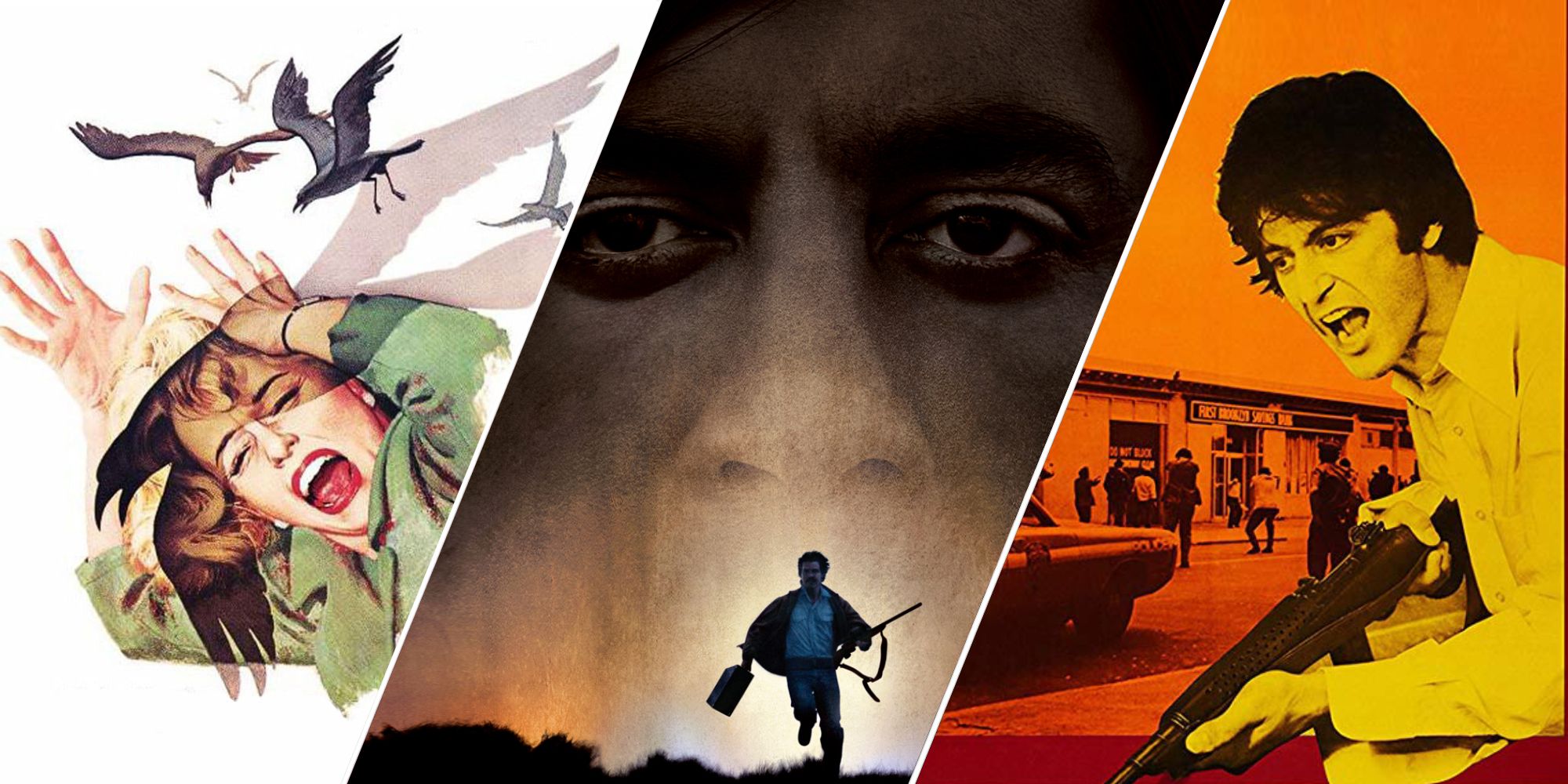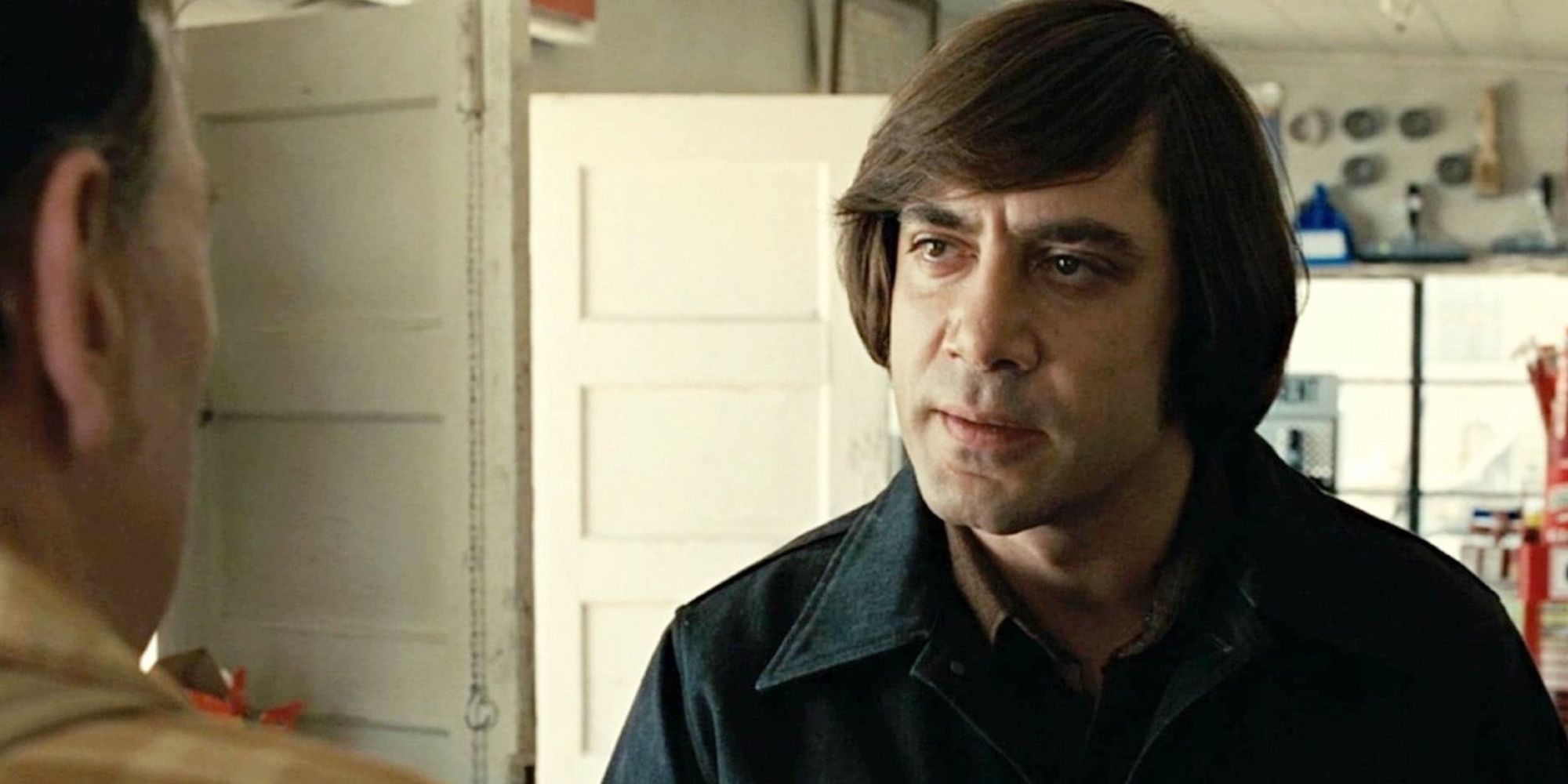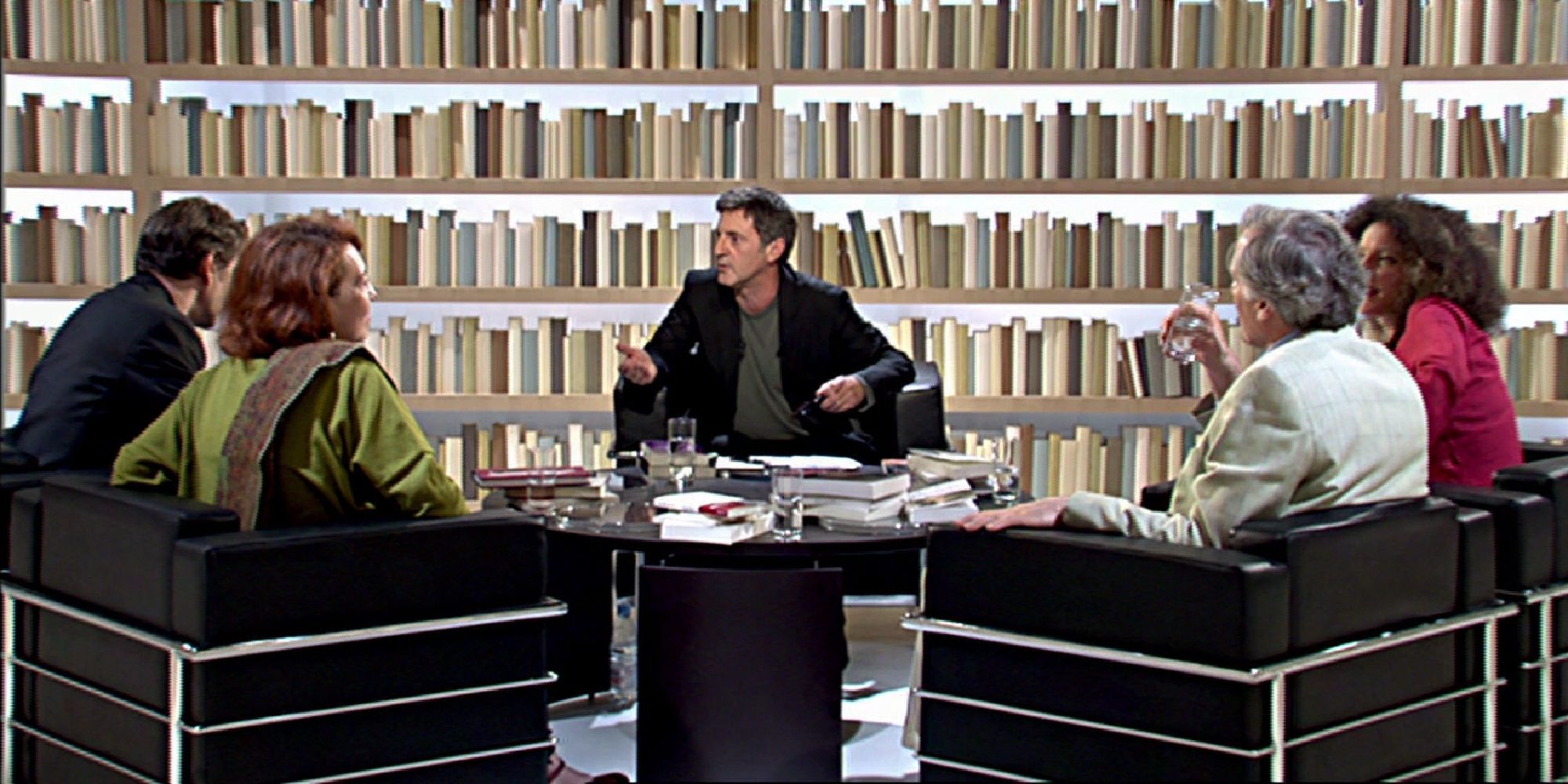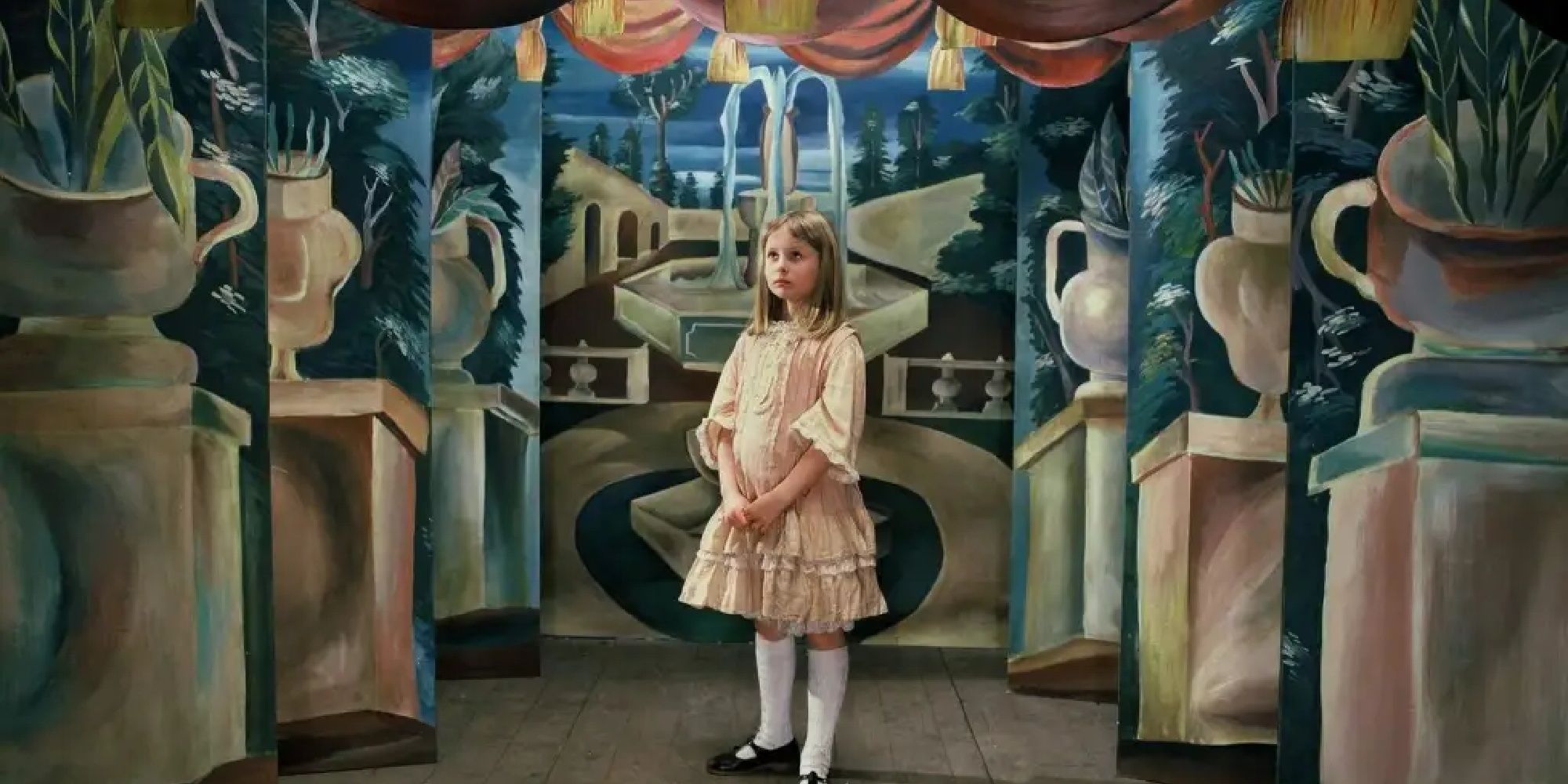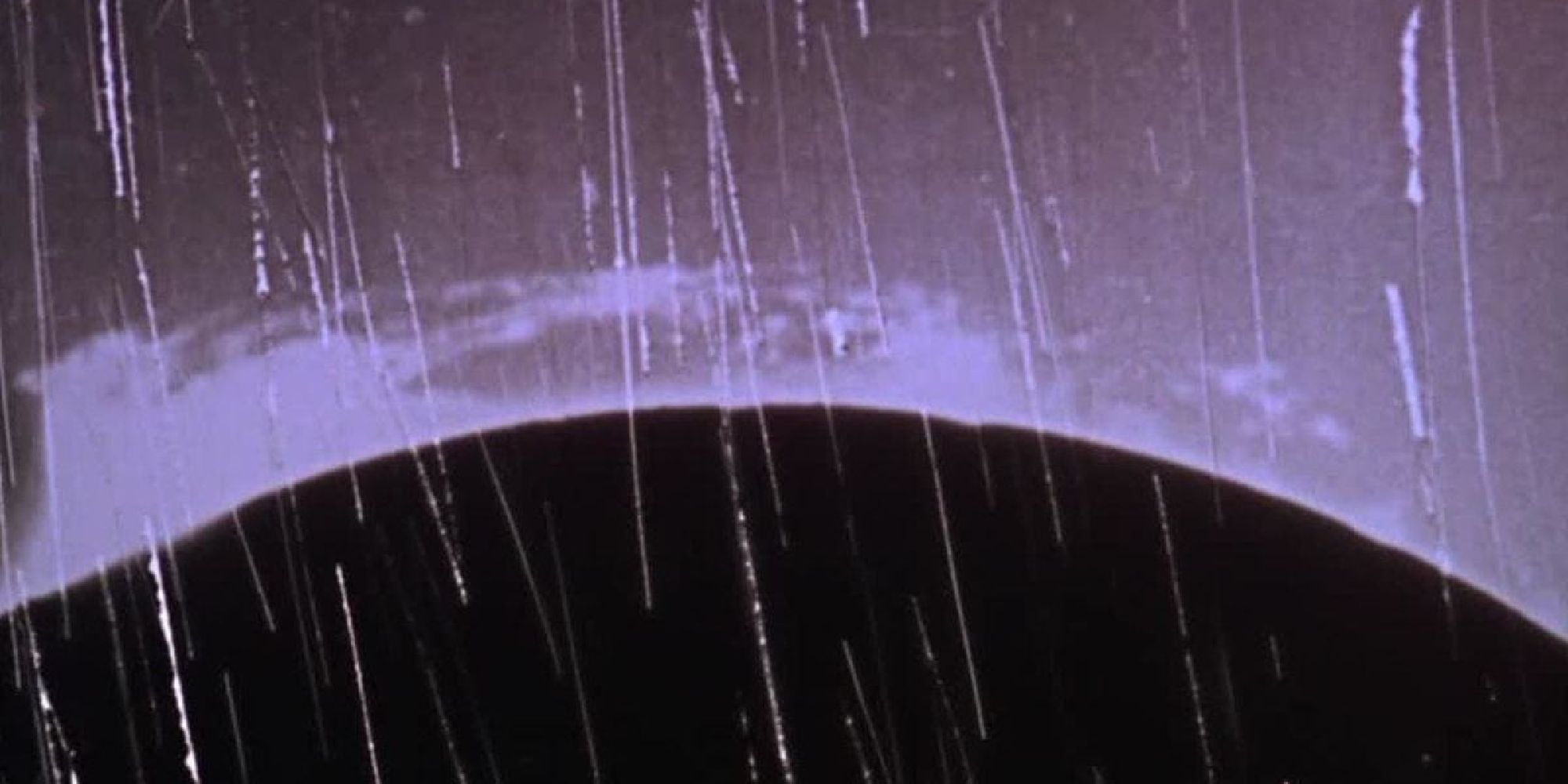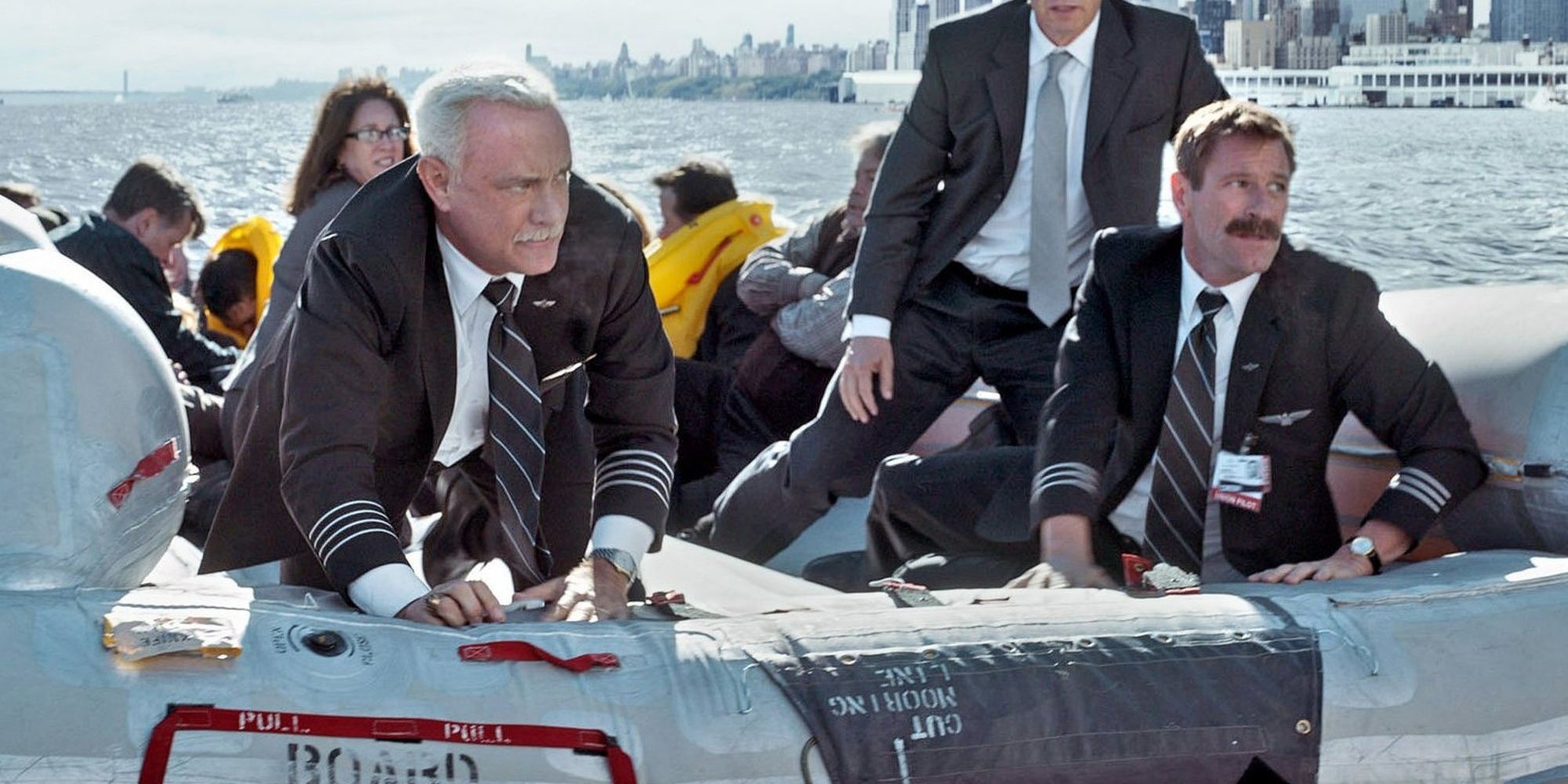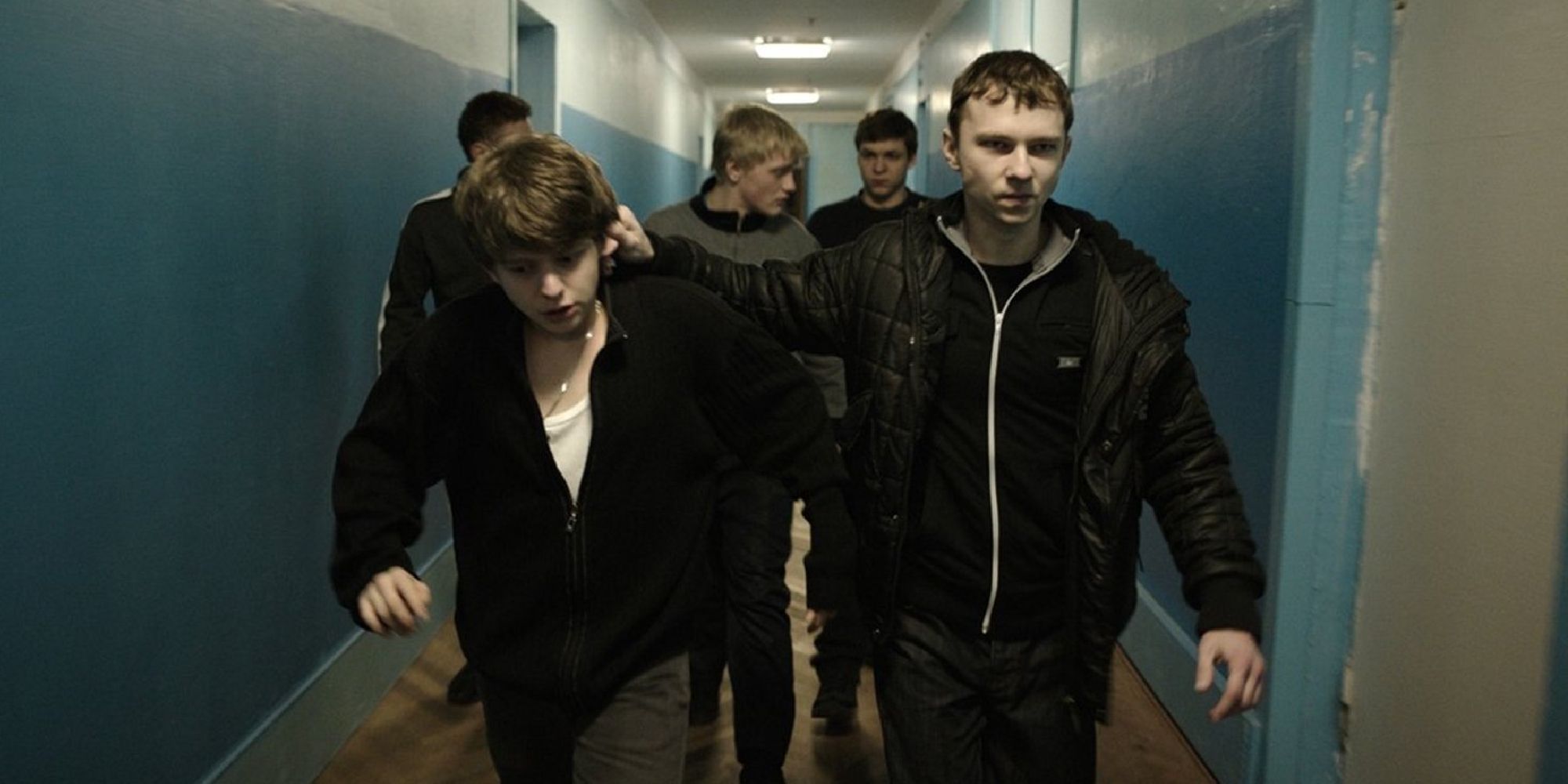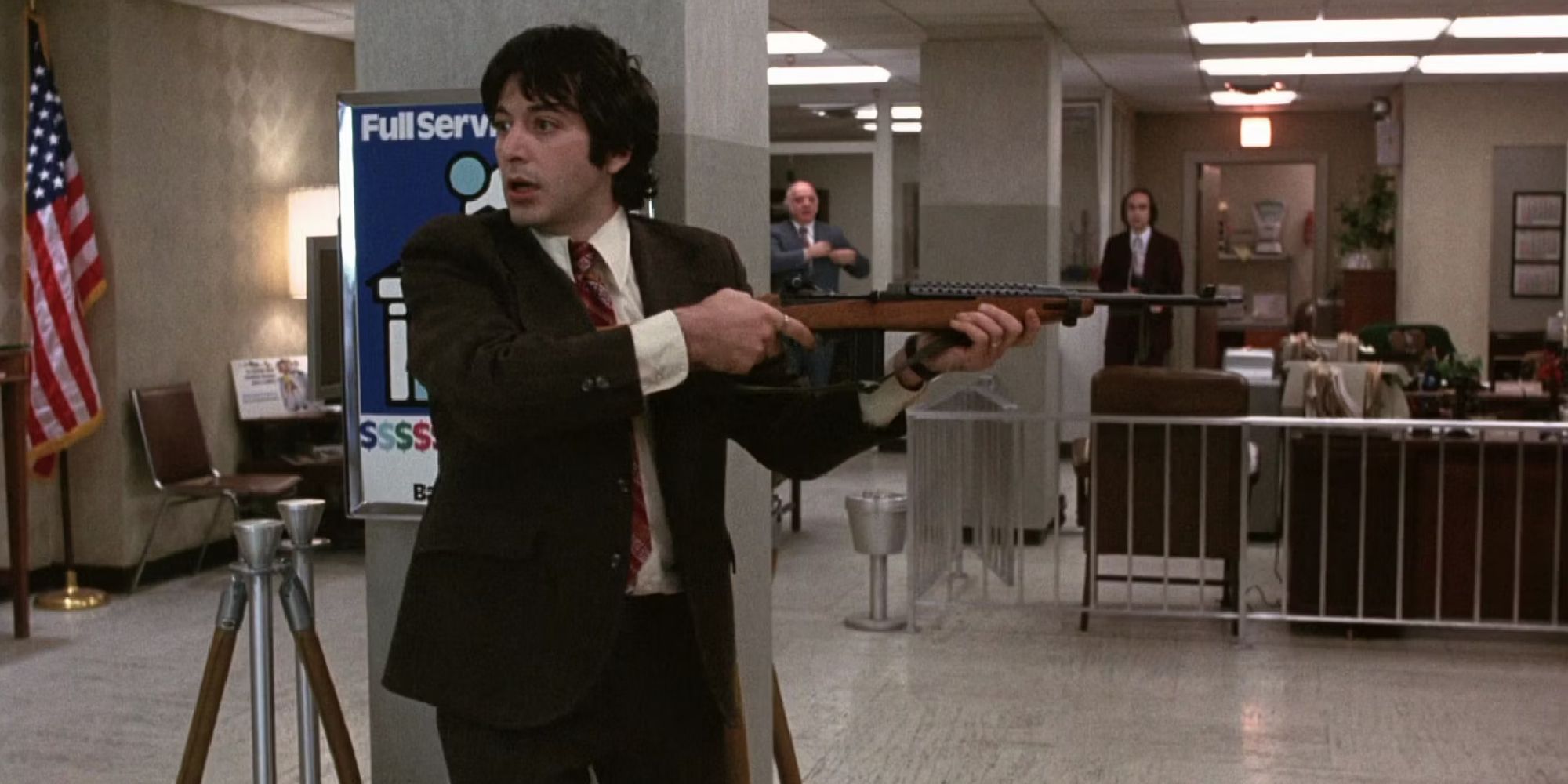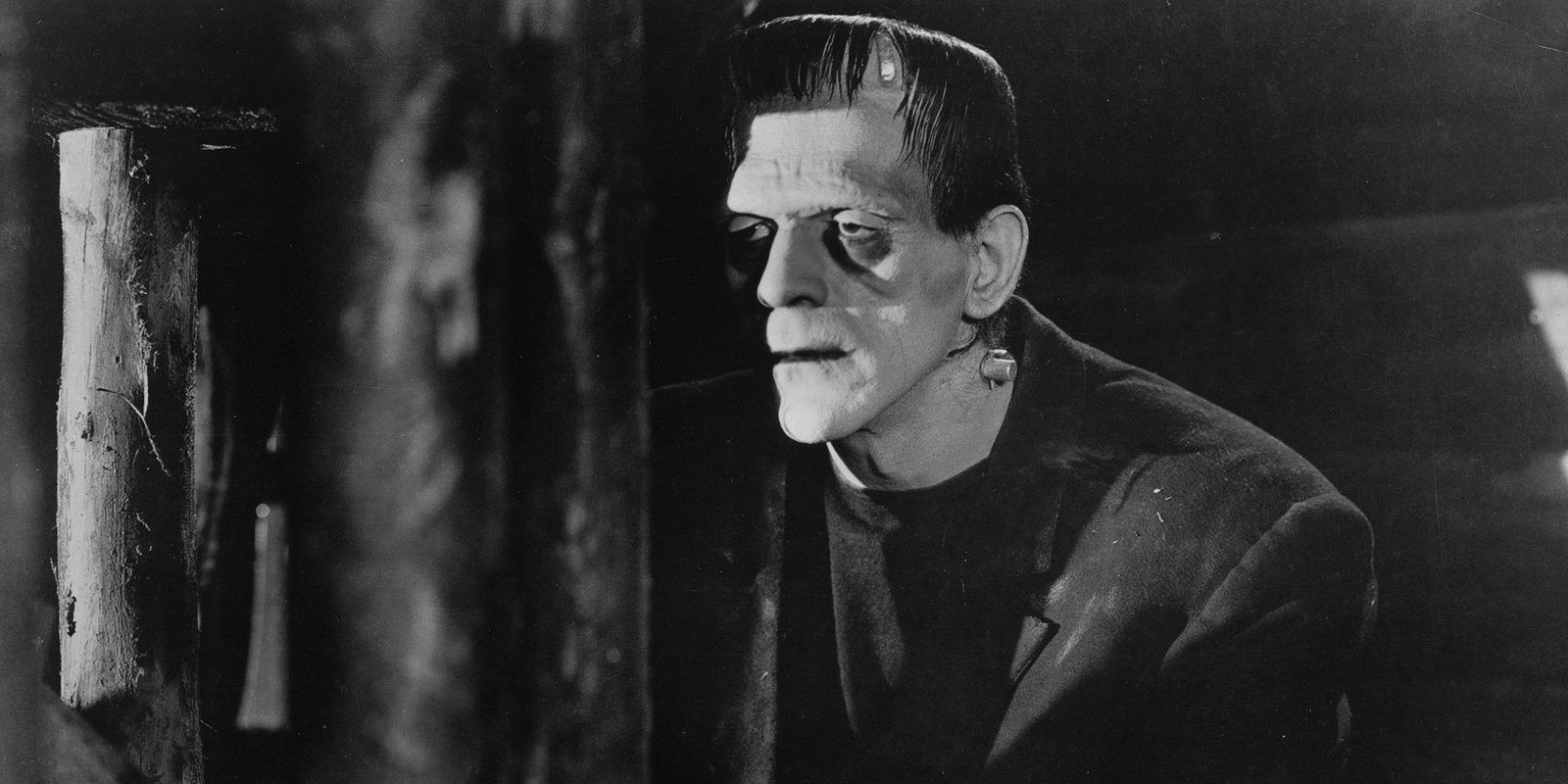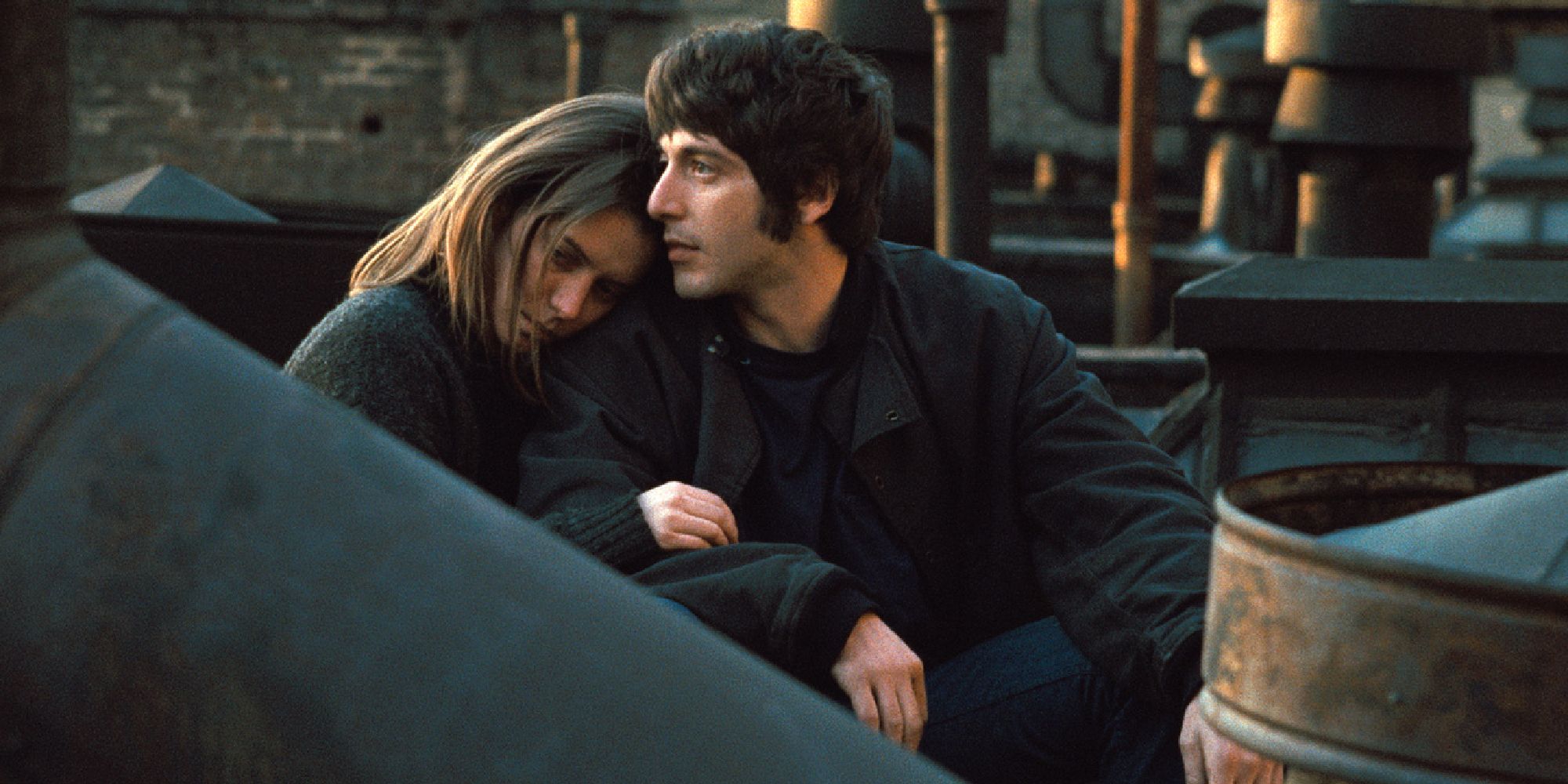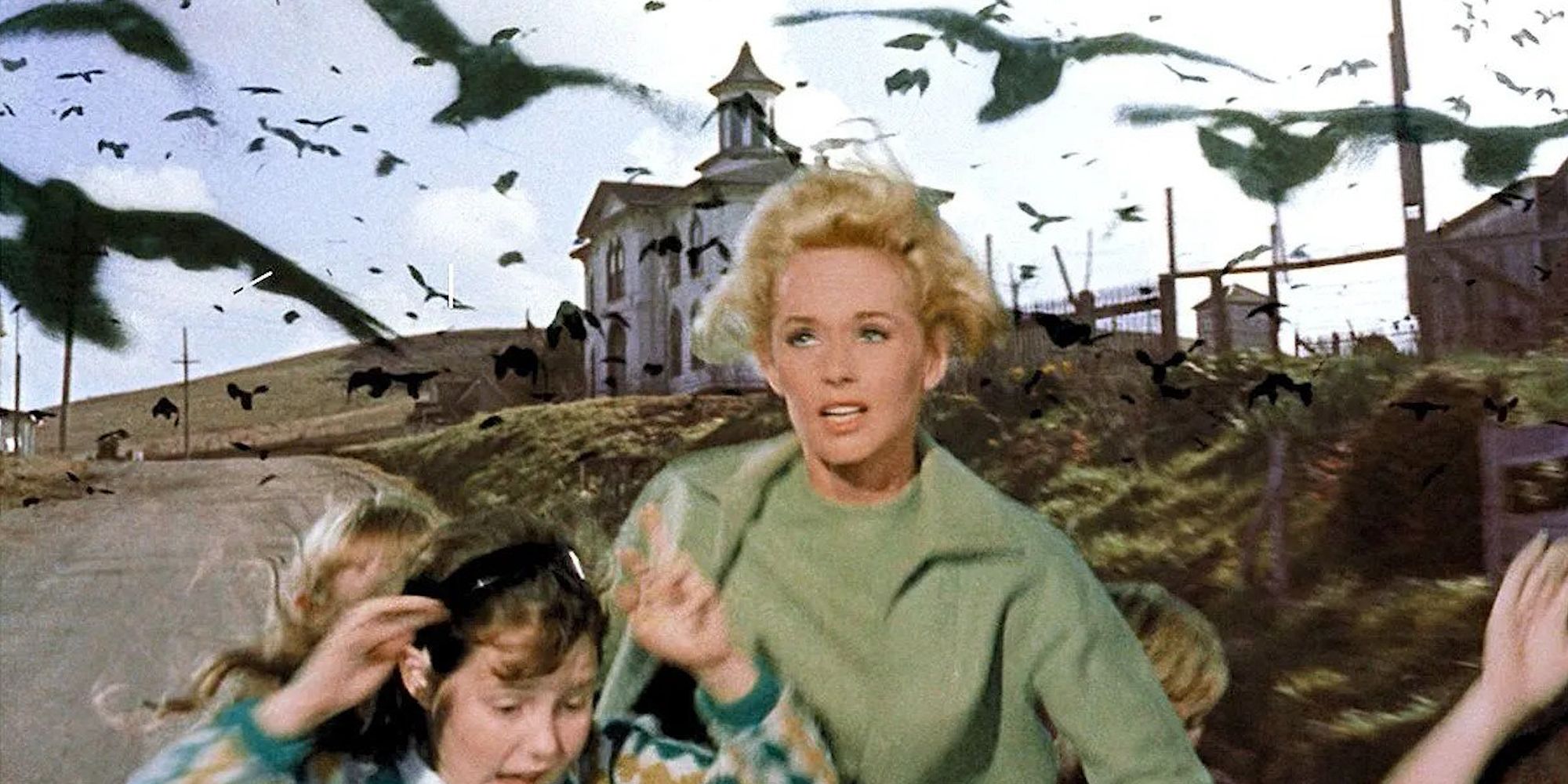It's pretty much a given that most movies will feature music in some capacity. Honestly, background music - whether it's a score written for a movie or a collection of pre-existing songs - probably goes unnoticed a great deal of the time. Plenty of movies have some sort of music in almost every scene, as it's a way to heighten emotions and add to what's playing out visually, in front of the viewer.
Then there are movies that stand out for featuring no music, or no music outside their credit sequences. It can be quite jarring to come across a movie without a traditional score, seeing as even silent movies tend to have music playing in the background. However, the following 10 examples show that it's possible, and can even make a film more powerful.
'No Country For Old Men' (2007)
The movie that earned The Coen Brothers a Best Picture Oscar, No Country For Old Men, is a dark and brutally realistic crime-thriller about two men getting into a game of cat and mouse over a suitcase full of money. What adds to the sense of grit and realism is the lack of music, with its suspenseful scenes playing out without a traditional score.
It stands in contrast to many other well-known movies made by the Coens, as their films tend to have great soundtracks, with Inside Llewyn Davis, O Brother, Where Art Thou?, and The Big Lebowski standing out in particular. Here, the film's silence adds to the experience immensely, with viewers having to wait until the end credits to hear music from the Coens' regular composer, Carter Burwell.
'Caché' (2005)
Michael Haneke is an iconic director on the international scene whose movies are often characterized by their deliberate pacing, grim subject matter, and sparse use of music. Caché is a film of his that takes not using music up to 11, with this dark thriller about a French couple who are stalked and regularly given strange videotapes being remarkably quiet and free of a traditional score.
Naturally, this makes things extra eerie, allowing an already tense and nerve-wracking movie to become even more stomach-churning. It's not an easy film to watch, like most of what Haneke makes, but the decision to keep things quiet adds to the suspense, strengthening Caché's power in the process.
'Alice' (1988)
Even if Alice had the sort of background music you'd expect in a fantasy movie, it would still be deeply unsettling. This take on the story of Alice's Adventures in Wonderland mixes live-action with stop-motion animation in an extremely eerie way. While other takes on Alice in Wonderland might have some nightmarish scenes, this film adaptation feels like a feature-length fever dream.
And the fact that the title character's trip into the well-known dream world doesn't feature music just adds to the strange, otherworldly feeling of it all. This is definitely not a movie young viewers should watch, owing to how scary it can be, but older viewers who want a dark and disquietingly quiet take on the story of Alice in Wonderland might get something out of it.
'Dog Star Man' (1964)
Split into five parts (one of which is included in the '1001 Movies You Must See Before You Die' list), Dog Star Man is a strange film that's as simple or as complex as the viewer wants it to be. At its core, it's about a man climbing a mountain with his dog, with plenty of strange visuals and inexplicable sequences that can be interpreted in any number of ways.
It's also technically a silent film in the most extreme sense, containing no dialogue, sound effects, or music. It's therefore all about the visuals, with the strange trip it takes viewers on likely to enthrall some whilst boring others, as many experimental films tend to do.
'Sully' (2016)
A somewhat overlooked directorial effort by Clint Eastwood, Sully tells the true story of Captain Chesley Sullenberger, a pilot who, in 2009, made an emergency landing while in control of a plane that had over 150 people onboard. All onboard survived, with the fact the landing happened on the Hudson River making it all the more dramatic.
Much of the movie covers the aftermath of the emergency landing and the post-crash investigation that put pressure on Sullenberger for his heroic actions. It may take some liberties with the truth - as historical movies tend to do - but the lack of a standard music score does help lend an air of realism to the film, particularly in its harrowing scenes that depict the emergency landing.
'The Tribe' (2014)
The Tribe is a Ukrainian film about a school for the deaf with a dark underbelly. It's shown to have a criminal hierarchy of sorts within its walls, with the plot following the protagonist getting mixed up in a gang of organized criminals who effectively run the school, terrorizing those who don't fall in line.
All the major characters are deaf, and to reflect this, The Tribe is a remarkably quiet movie. There are sound effects, meaning it's not a silent movie, but the film lacks background music and dialogue, with conversations instead done with sign language... that's also not translated via subtitles, meaning viewers who aren't knowledgeable when it comes to signing will have to try to keep up with actions, body language, and the film's visual language.
'Dog Day Afternoon' (1975)
A tense and nerve-wracking movie about a seemingly simple bank robbery that goes disastrously wrong, Dog Day Afternoon is one of the most iconic films from the 1970s, and also features Al Pacino at the height of his powers as an actor.
Technically, Dog Day Afternoon does feature a song in its opening credits sequence, that helps set the mood and setting of the film. After that, though, it's two hours of soundtrack-free cinema, helping the viewer feel as though they're really in the bank as the attempted robbery is playing out, given that in the real-life story the film was based on, there obviously wouldn't have been any background music.
'Frankenstein' (1931)
1931's Frankenstein is a horror classic, and helped define how Frankenstein's Monster looked in pop culture going forward. The story is of course a familiar one: there's a scientist who wants to create life, and so with the help of his assistant, he steals body parts from a nearby cemetery and assembles them into a grotesque-looking human creature, who does indeed come to life, with disastrous results.
Music is kept to a surprising minimum throughout this early horror movie, as besides the opening and end credits, there's almost none of it. It stands in contrast to many movies of the period, which often have sweeping, even bombastic music that's hard to ignore or not notice.
'The Panic in Needle Park' (1971)
The Panic in Needle Park is a harshly realistic movie about two young people who fall in love, with one of them being a heroin addict, who drags the other into a lifestyle of drug dependency. It's notable for being one of Al Pacino's first leading performances, who impressed in this role one year before the first Godfather truly made him a star.
Naturally, no movie that deals with drug addiction is going to be an easy watch, but the pervasive silence in The Panic in Needle Park makes it extra haunting and real-feeling. It opts out of using music, meaning the focus is always on the characters and their struggles, with the quiet (and even boring) moments in the lives of those dealing with addiction hitting just as hard as the more outwardly dramatic moments.
'The Birds' (1963)
Few Alfred Hitchcock movies are as well-known as The Birds. This 1963 horror movie sees its characters dealing with a mysterious series of attacks by swarms of deadly birds, with an entire town's existence becoming threatened by the unexplained phenomenon.
While many Hitchcock movies feature iconic music scores, The Birds was a film that notably didn't feature a traditional score. It makes for a more immersive horror movie than expected, with the lack of music in the film's deathly quiet final sequence ensuring that The Birds ends on an extra haunting and memorable note.

